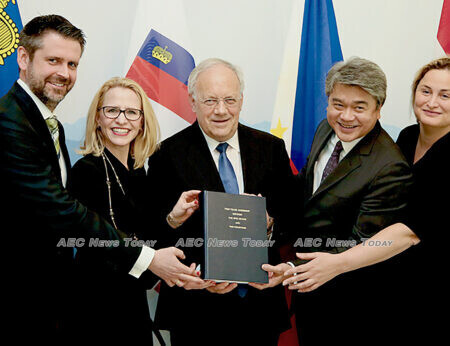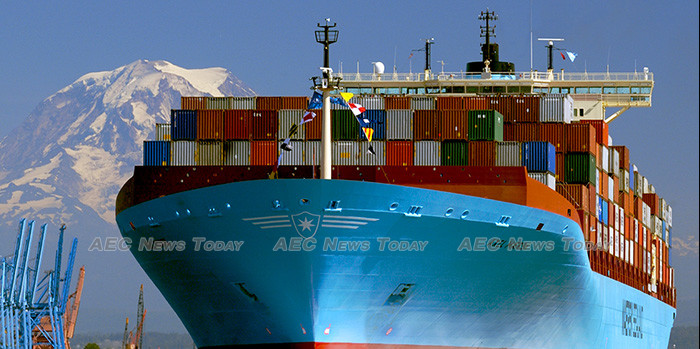The Philippines is at a critical juncture in its economic relations with the European Union (EU) over free trade agreement (FTA) negotiations. As the economic consequences of the global coronavirus pandemic grips the world, it should seize this opportunity to revive negotiations and secure a Philippine–EU FTA to help drive long-term and sustainable economic recovery.
The EU is the largest foreign investor in the Philippines and the country’s fourth largest trading partner. In 2018–19 two-way trade with EU member states accounted for almost 10 per cent of the Philippines’ total.
Under the current Generalized Scheme of Preferences Plus (GSP+) Philippine exports receive full duty-free entry to the European Union for two-thirds of all EU tariff lines. In return, the Philippines must effectively implement its commitments to international conventions on sustainable development and good governance.
Philippine exports to the EU grew by 27 per cent one year after gaining GSP+ status in 2014. This translated into significant socioeconomic benefits for local and rural communities, reflected in the increase of over 200,000 jobs in the agriculture and manufacturing sectors.
Privilege has a price
The political conditionality of maintaining GSP+ status is meant to acknowledge the Philippine government’s upholding of international commitments on human and labour rights, environmental protection, and good governance.

Earlier this year the EU Delegation to the Philippines shared that it prioritises the GSP+ over the prospective Philippine–EU FTA as the governing platform for economic cooperation with the current Philippine administration.
Compliance with GSP+ commitments remains modest at best, due to prevailing concerns over human rights violations and a shrinking democratic space in the Philippines.
The GSP+ privileges are set to expire by the end of 2023. The Philippines must act boldly to move negotiations forwards if a Philippine–EU FTA is to be reached in the next few years.
While formal negotiations for a Philippine–EU FTA began in 2015, both parties have met only twice to discuss the FTA, stalled due to President Rodrigo Duterte’s hostility towards the EU over its concerns for Philippine GSP+ commitments.
President Duterte has repeatedly lambasted the bloc for meddling in the Philippines’ internal affairs, while the EU has been openly critical of the administration’s ‘war on drugs’, strongly supporting a human rights violations probe.
Bilateral relations are strained further by President Duterte himself, who has rejected EU aid packages, shunned invitations to multilateral forums and threatened EU ambassadors with expulsion. Reviving the stalled negotiations is as much a political matter as it is an economic one.
Why the Philippines needs an FTA with the EU
There are two main incentives for the Philippines to realise a bilateral FTA with the EU. First, the Philippines already has one foot in the European market through the GSP+ and an existing FTA with European Free Trade Association (EFTA) states (Iceland, Liechtenstein, Norway and Switzerland).

Second, a Philippine–EU FTA would put the Philippines on an equal footing with other Asean countries aggressively pursuing closer economic ties with the EU.
The Philippine–EFTA FTA builds on the gains of the GSP+. It promises increased market access to all industrial, fishery, and agricultural Philippine exports to EFTA states, and allows investments and technological know-how from these highly developed states to flow into the Philippine economy.
The agreement would significantly expand the Philippines’ foothold in the European market, while giving it access to the EFTA’s wide network of preferential trade agreements outside the European Union.
Without prioritising a Philippine–EU FTA, the Philippines will continue to lag behind its Asean counterparts. Singapore and Vietnam have brand new FTAs with the European Union, and Indonesia is working hard to follow suit.
An EU–ASEAN FTA, the ultimate objective, will be a step closer to realisation with a Philippine–EU FTA on the table.
The Philippines should ripen domestic conditions that allow for a Philippine–EU FTA to materialise. Key structural reforms should be considered, such as accelerating the Corporate Recovery and Tax Incentives for Enterprises (CREATE) Act and investing in digital infrastructure.

The former would create a more favourable business environment by liberalising restrictive foreign investment laws, while the latter would support access to digital connectivity as the Philippines adjusts to digitalisation. Upskilling the labour force, prioritising flagship infrastructure projects, and removing incentives to corruption are also key areas for reform.
The Philippines must strive to present itself as a stable and credible partner both within and beyond economic affairs, lest it be flagged as a fair-weather friend. This includes a careful recalibration of the current administration’s comportment towards the EU.
Both parties should also adjust the negotiating points of the proposed FTA to make it more responsive to the needs of the post-COVID-19 pandemic world.
Revamped FTA negotiations can be promoted by the next administration in 2022. In the meantime, the Philippines can ramp up efforts to implement its GSP+ commitments, particularly on human rights and labour standards, to be better poised as a long-term partner of the EU.
Talks for a Philippine–EU FTA have slowed down, but the gravity of the COVID-19 crisis and its impending consequences call for action.
The Philippine–EU FTA needs to be included in any post-pandemic economic recovery plan. It will send a clear signal against protectionism and assert that open, fair trade is the path towards mutual economic recovery and prosperity.
This article was written by Stacey Nicole M Bellido, Foreign Affairs research specialist in the Center for International Relations and Strategic Studies at the Philippine Foreign Service Institute. It first appeared on East Asia Forum under a Creative Commons License and is reproduced here with its permission.
Feature photo Universal cargo
Related:
- German firms call for resumption of EU-PH free trade talks (Philippine News Agency)
- EU not keen on FTA talks with PH (Manila Bulletin)
- Prospects dim for free-trade deal with EU (Inquirer.net)
East Asia Forum
It consists of an online publication and a quarterly magazine, East Asia Forum Quarterly, which aim to provide clear and original analysis from the leading minds in the region and beyond.
Latest posts by East Asia Forum (see all)
- China’s South China Sea bullying seeing increased blowback from Asean claimants – February 2, 2022
- Illusionary, delusionary or visionary? Cambodia tests living with COVID-19 – December 6, 2021
- Prioritising a Philippine–EU FTA is vital for post-pandemic recovery – July 26, 2020
- Time for Asean to stand up for itself in the South China Sea – July 25, 2020


